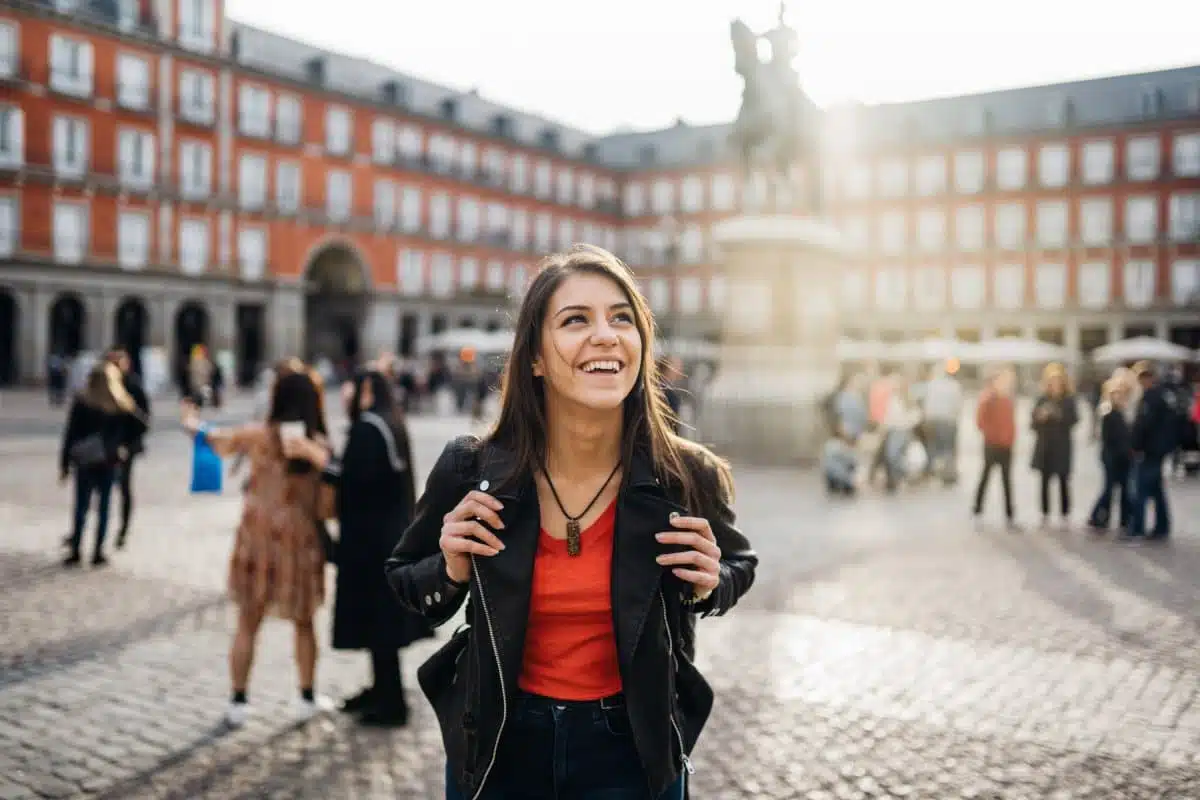Madrid, the vibrant capital of Spain, is a city where culture, art, and Spanish zest for life converge. With its world-renowned museums, historic neighborhoods, lush parks, and culinary delights, Madrid offers every traveler an endless array of experiences. This guide aims to navigate you through the city’s must-visit destinations, from the grandiose Royal Palace to the bustling streets of the Mercado de San Miguel, providing insider tips to enhance your journey.
1. The Prado Museum
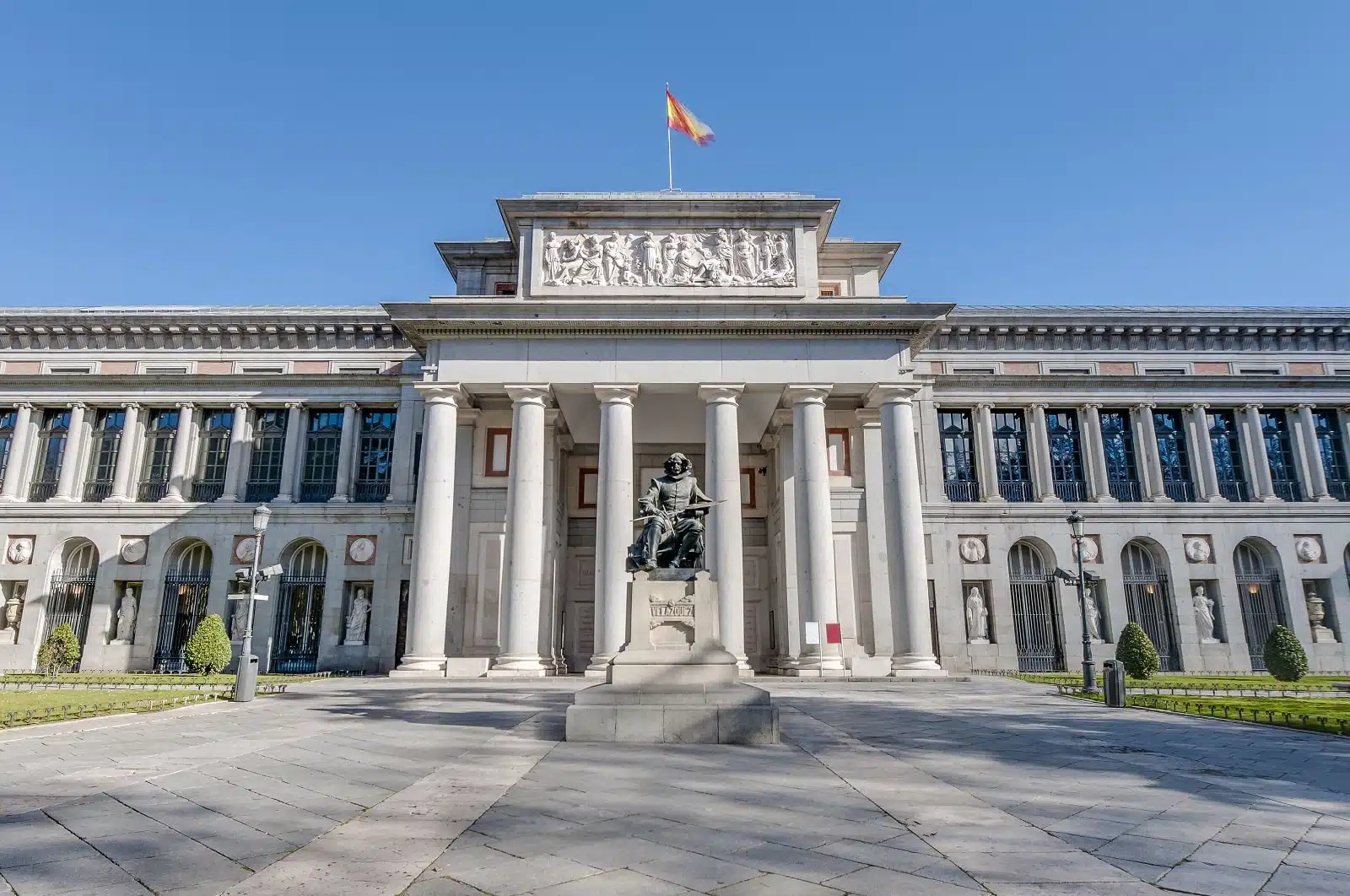
Image Credit: Shutterstock / Anibal Trejo
Housing an impressive array of masterpieces from Velázquez, Goya, and El Greco, the museum offers a profound narrative on the development of Western art. Its extensive collection spans several centuries, providing insights into the artistic movements that shaped Europe. The Prado’s focus on Spanish art highlights the country’s pivotal role in Europe’s cultural and political history, making it an essential visit for those seeking to understand the continent’s artistic heritage.
Insider’s Tip: Purchase tickets online to avoid long queues, and consider visiting on weekday afternoons when it’s less crowded.
When to Travel: Spring (March to May) and fall (September to November) offer pleasant weather and thinner crowds.
How to Get There: The Prado is easily accessible by metro, with the nearest station being Atocha.
2. Royal Palace of Madrid
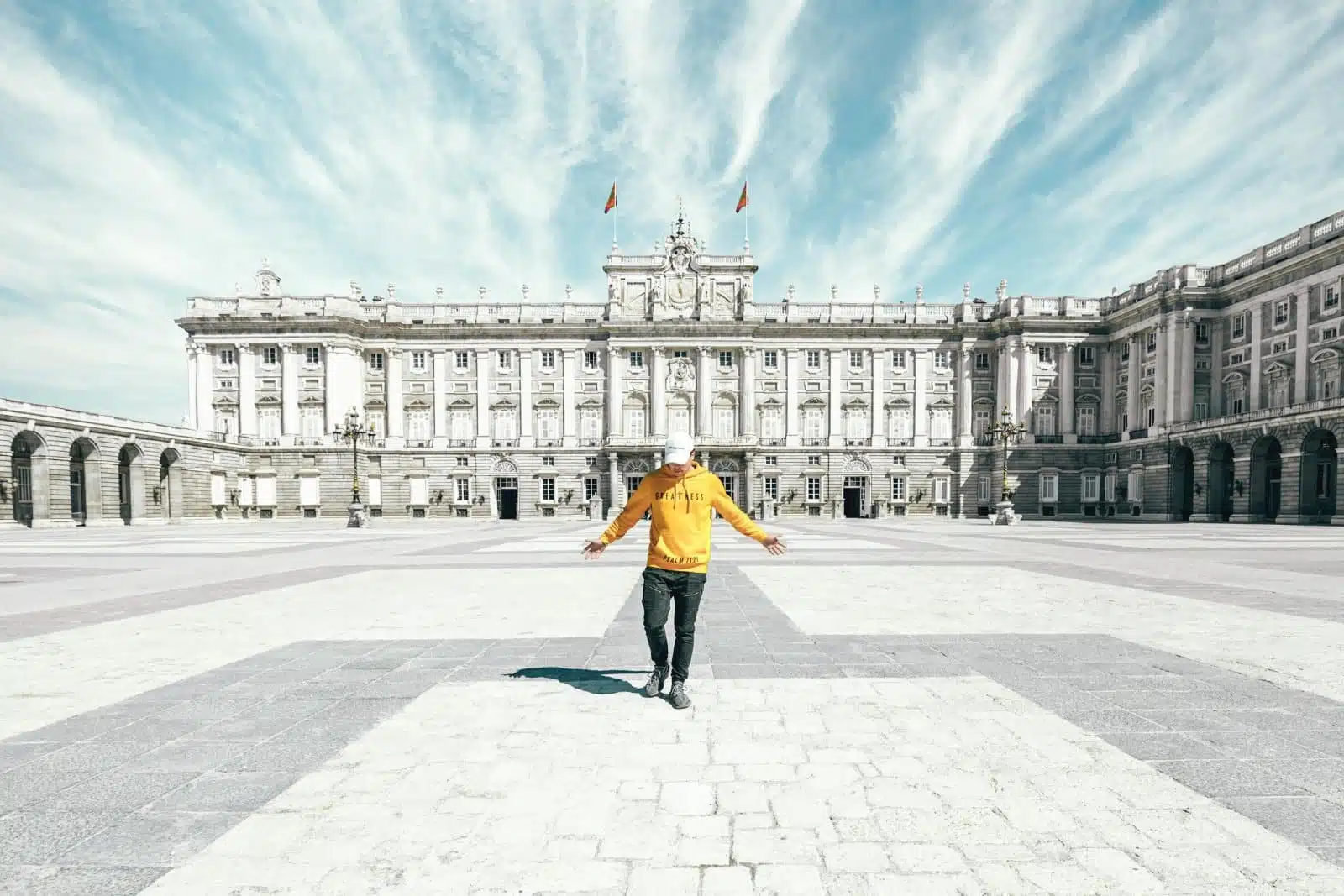
Image Credit: Pexels / Spencer Davis
The Royal Palace of Madrid embodies the splendor of Spain’s monarchical history. With over 3,000 rooms adorned with exquisite art and furnishings, the palace celebrates the opulence of European royalty. Its architecture, a blend of Baroque and Classical styles, showcases the craftsmanship and artistic vision of the era. The palace serves as a cultural repository, housing significant collections of paintings, sculptures, and tapestries. Visitors are offered a glimpse into the lives of Spanish royalty, with staterooms and private apartments revealing the personal tastes and political ambitions of Spain’s monarchs.
Insider’s Tip: The palace offers free entry on specific days during the last two hours before closing – check the official website for details.
When to Travel: Visit in the off-peak season (winter or early spring) to enjoy the palace with fewer tourists.
How to Get There: The Opera metro station is the closest to the palace, just a short walk away.
3. Retiro Park
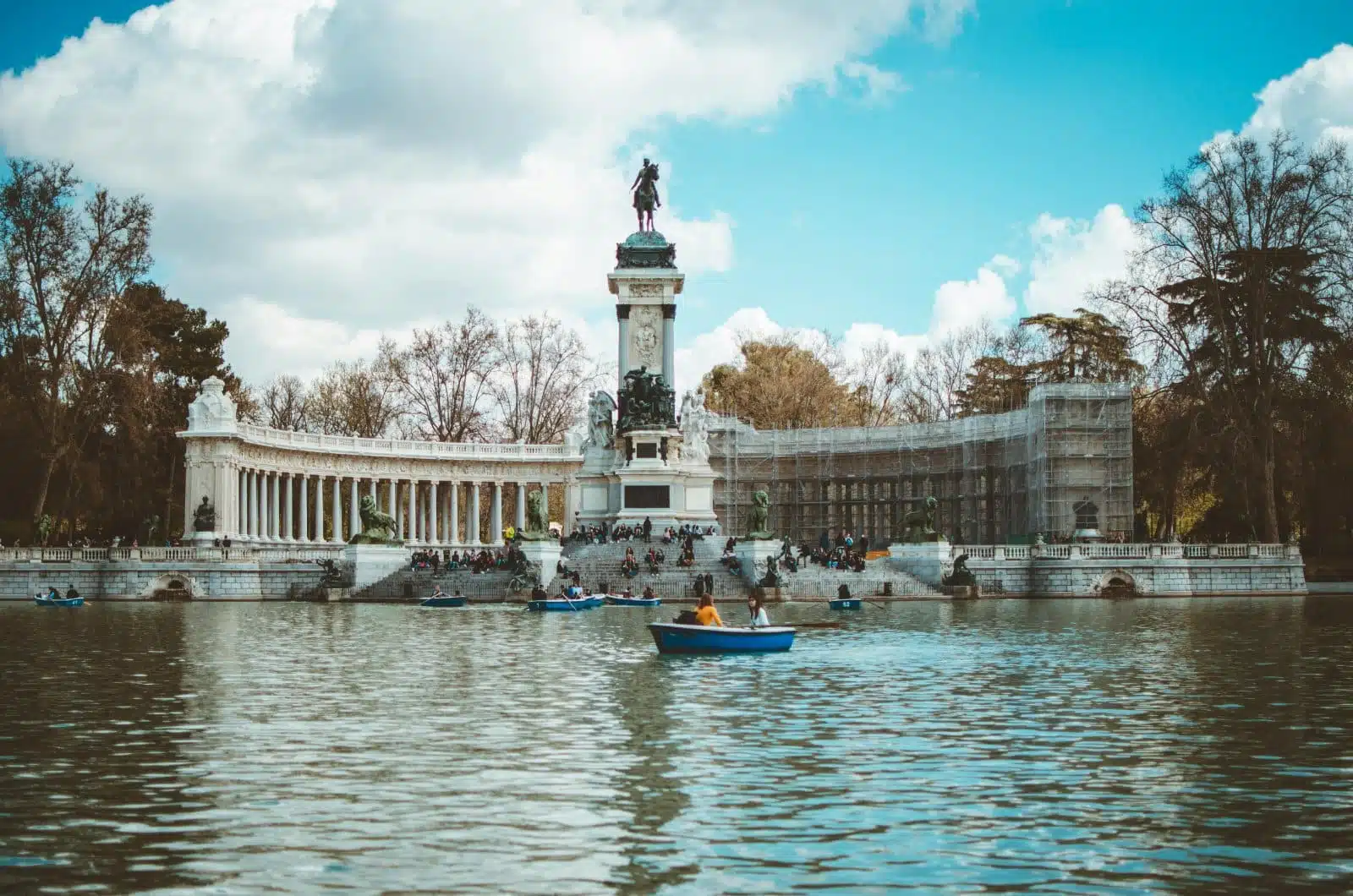
Image Credit: Pexels / Nicolas Postiglioni
A verdant retreat in the heart of Madrid, Retiro Park was once reserved for the royal family, it is now a beloved public space that embodies the city’s commitment to leisure and culture. The park’s diverse landscape includes formal gardens, rustic arbors, and expansive lawns, providing a serene backdrop for relaxation and recreation. Cultural landmarks within the park, such as the Crystal Palace and the Velázquez Palace, host exhibitions and events, bridging the gap between nature and art. Retiro’s lake, the park’s focal point, invites visitors to enjoy boating or simply enjoy the tranquil water views.
Insider’s Tip: Rent a rowboat in the early morning to enjoy the peaceful ambiance of the park’s lake.
When to Travel: Spring and autumn are ideal, with blooming flowers and changing leaves creating a picturesque setting.
How to Get There: Retiro Park is accessible from the Retiro metro station.
4. Mercado de San Miguel
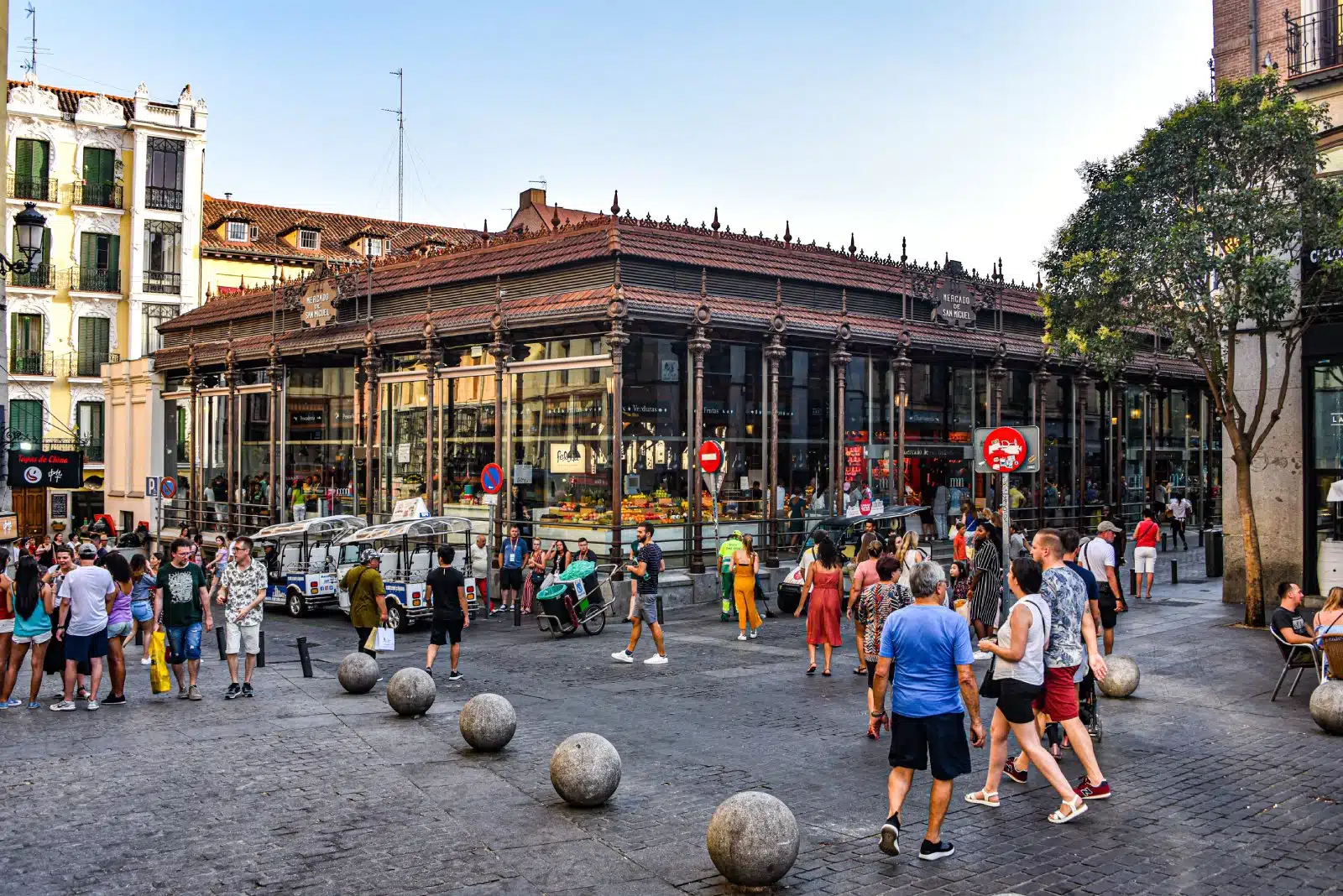
Image Credit: Shutterstock / Mark Green
Mercado de San Miguel is a culinary crossroads where the flavors of Spain meet. With its iron and glass structure, this historic market is both a gathering place for gourmets and a showcase for Spanish gastronomy. Stalls brimming with fresh produce, seafood, meats, and baked goods offer a taste of the regional diversity of Spanish cuisine. The market is also a social hub, where locals and visitors mingle over tapas and wine, experiencing the convivial spirit at the heart of Spanish culture.
Insider’s Tip: Visit during lunchtime on weekdays to avoid the tourist rush and interact more with local vendors.
When to Travel: Weekdays are preferable for a less crowded experience.
How to Get There: Located within walking distance from the Sol and Opera metro stations.
5. Thyssen-Bornemisza Museum
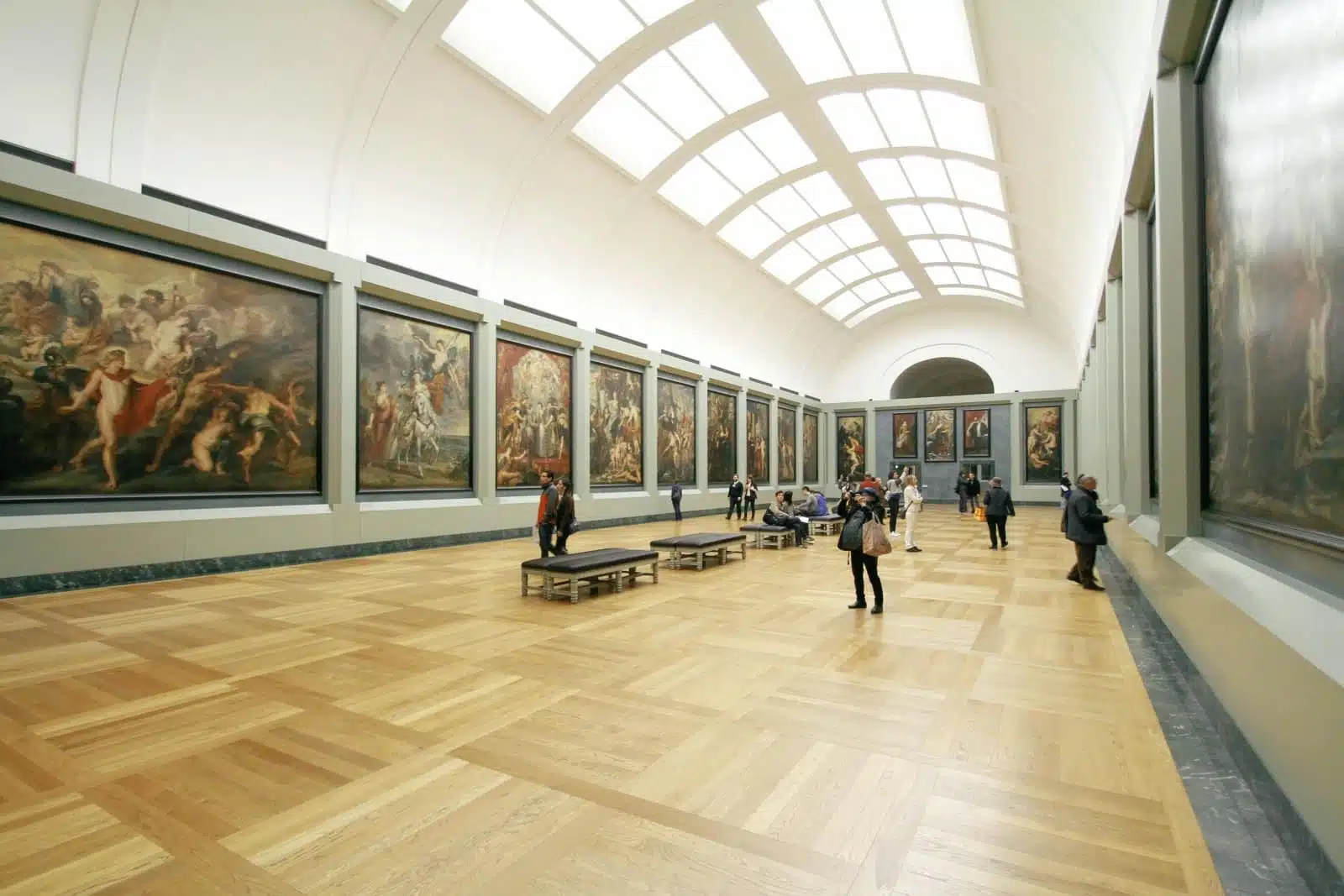
Image Credit: Pexels / Ricardo
The Thyssen-Bornemisza Museum complements Madrid’s art scene with its eclectic collection, bridging the gap between the classical and the modern. From the Middle Ages to the late 20th century, the museum’s holdings include works by Renaissance masters, Impressionists, and modern artists, providing a comprehensive overview of Western art. The Thyssen-Bornemisza fills a unique niche, offering perspectives on artistic movements not extensively covered by other Madrid museums. Its intimate galleries and thematic exhibitions encourage visitors to engage deeply with the art, making it a key destination for art lovers.
Insider’s Tip: Look for the museum’s lesser-known temporary exhibitions, often featuring groundbreaking works and artists.
When to Travel: Autumn and spring provide comfortable weather for indoor museum visits.
How to Get There: The Banco de España or Sevilla metro stations easily reach the museum.
6. Santiago Bernabéu Stadium
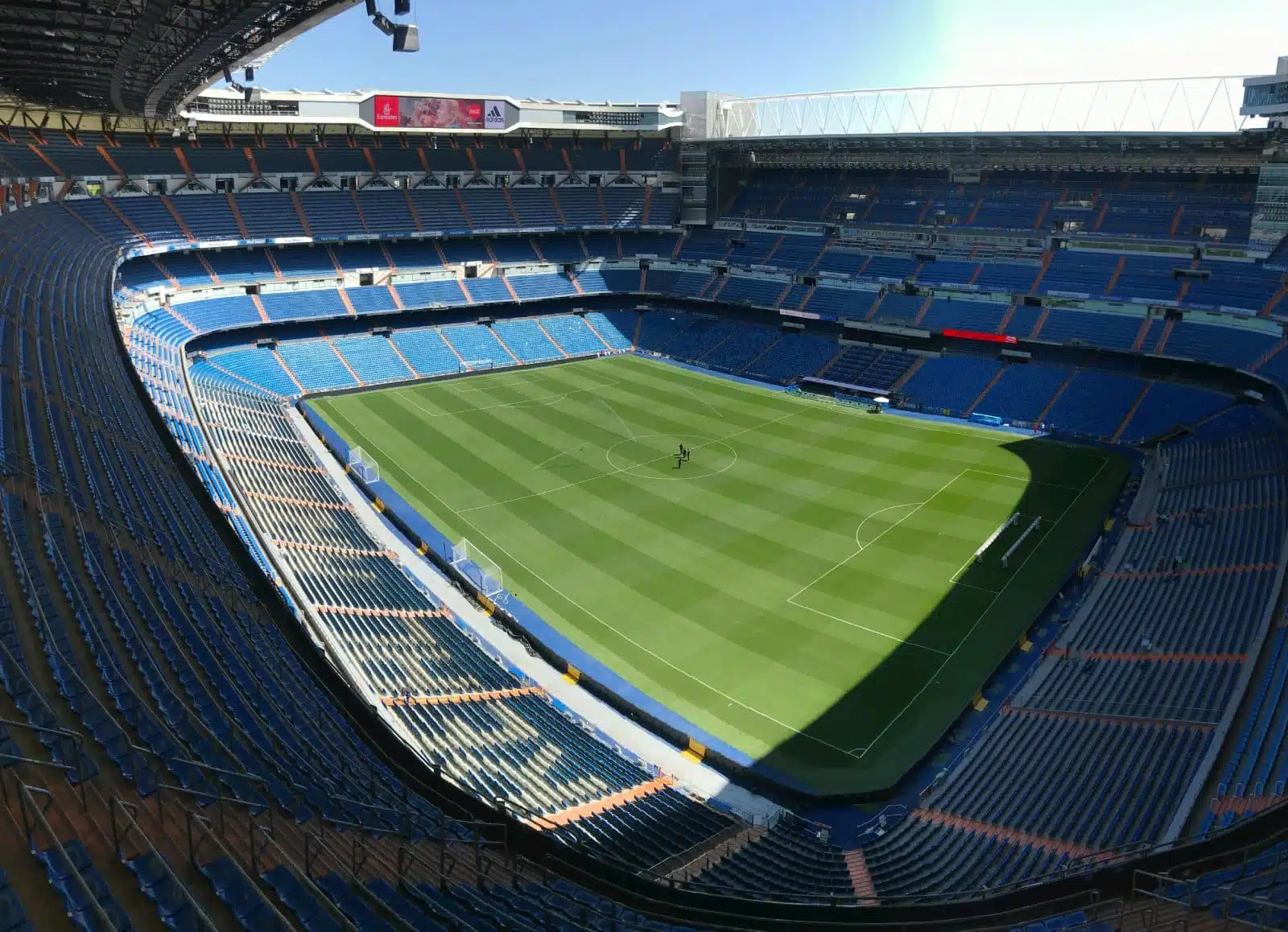
Image Credit: Pexels / Pablo Cordero
Santiago Bernabéu Stadium is a cultural landmark that embodies the passion and glory of football in Spain. Home to Real Madrid C.F., the stadium is a pilgrimage site for football fans, offering tours that provide access to the hallowed grounds, the trophy room, and the players’ areas. The Bernabéu is not just about the spectacle of match days; it is a testament to the sport’s ability to inspire and unite people across the globe.
Insider’s Tip: Even if you’re not a football fan, the stadium tour offers unique insights into the sport’s cultural impact in Spain.
When to Travel: Non-match days provide a more relaxed experience for the tour.
How to Get There: Santiago Bernabéu metro station drops you right before the stadium.
7. El Rastro Market
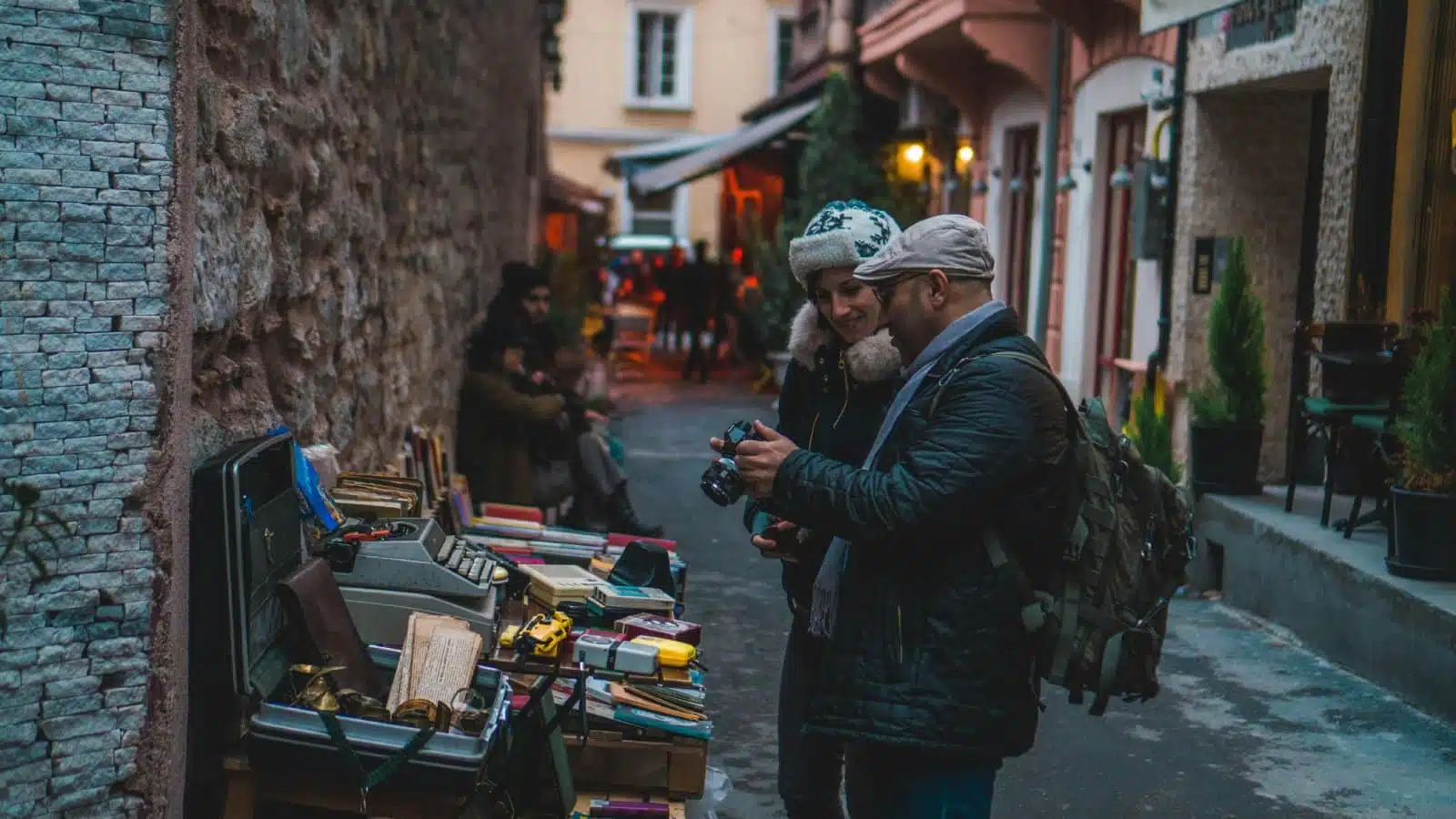
Image Credit: Pexels / Safa Bakırcı
Every Sunday, El Rastro Market is the epitome of Madrid’s vibrant street life. Its streets transform into a bustling marketplace where the unexpected is the norm. From antiques and vintage clothes to artisan crafts and contemporary art, El Rastro is a treasure trove for collectors and casual shoppers. The market is a cultural experience reflecting the city’s diverse communities and artistic expressions.
Insider’s Tip: Arrive early to sift through the best items before the crowds arrive.
When to Travel: Sunday mornings, year-round, offer a great experience.
How to Get There: The La Latina or Puerta de Toledo metro stations are your best bet.
8. Gran Vía
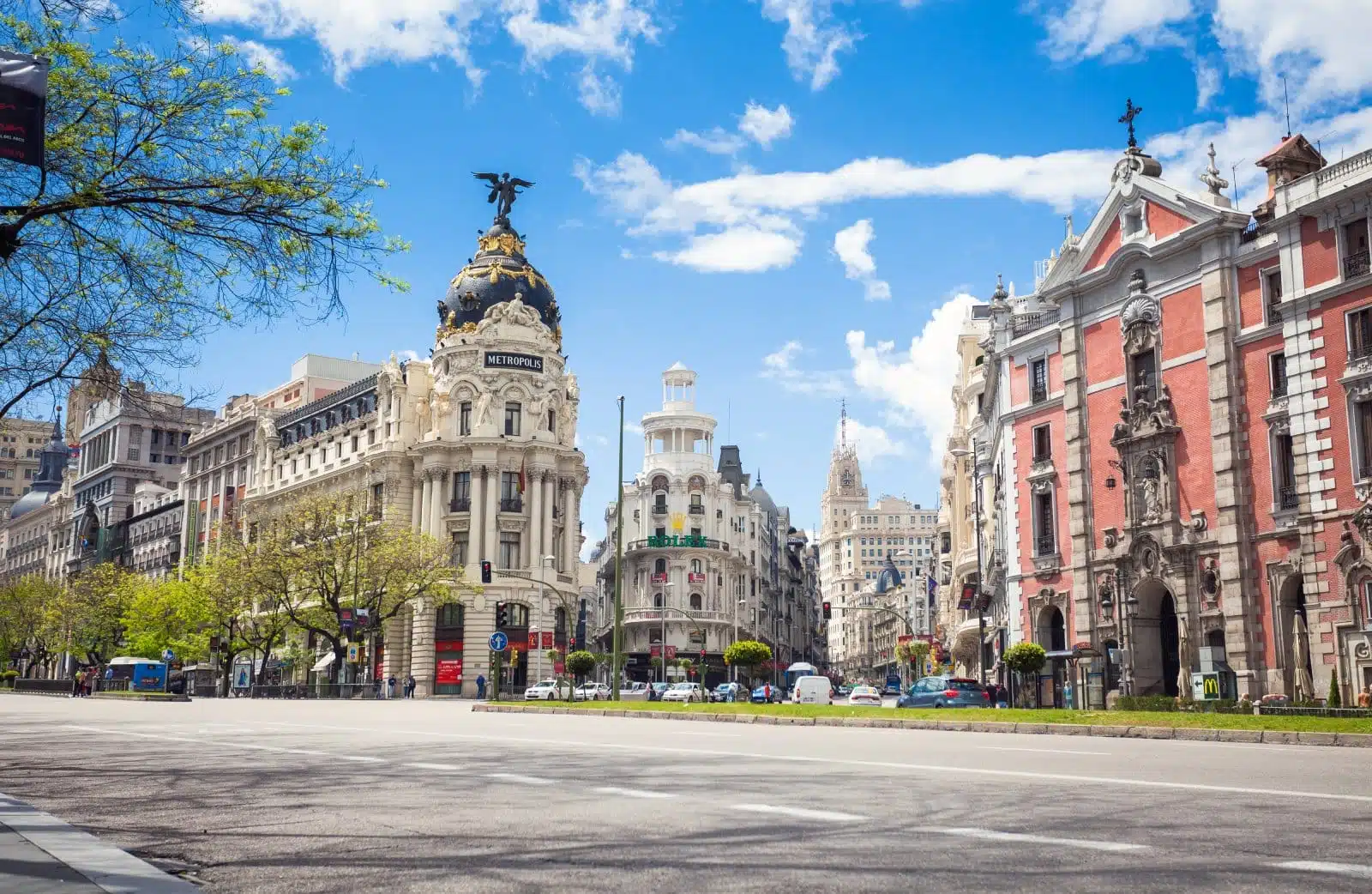
Image Credit: Shutterstock / Pixachi
Gran Vía is Madrid’s showcase of urban evolution, a thoroughfare that captures the city’s architectural innovation and cosmopolitan spirit. Lined with buildings that range from Belle Époque to Art Deco, Gran Vía is a visual chronicle of Madrid’s growth into a modern metropolis. Beyond its architectural significance, the street is a cultural and commercial activity center, with theaters, shops, and restaurants drawing locals and tourists alike. Gran Vía’s energy is most palpable at night when its illuminated facades and bustling crowds epitomize Madrid’s reputation as a city that never sleeps.
Insider’s Tip: Visit at night when the street and buildings are beautifully lit, offering a magical urban landscape.
When to Travel: Evening walks are especially rewarding for the lively atmosphere and illuminated views.
How to Get There: Gran Vía metro station places you right on this iconic street.
9. Plaza Mayor
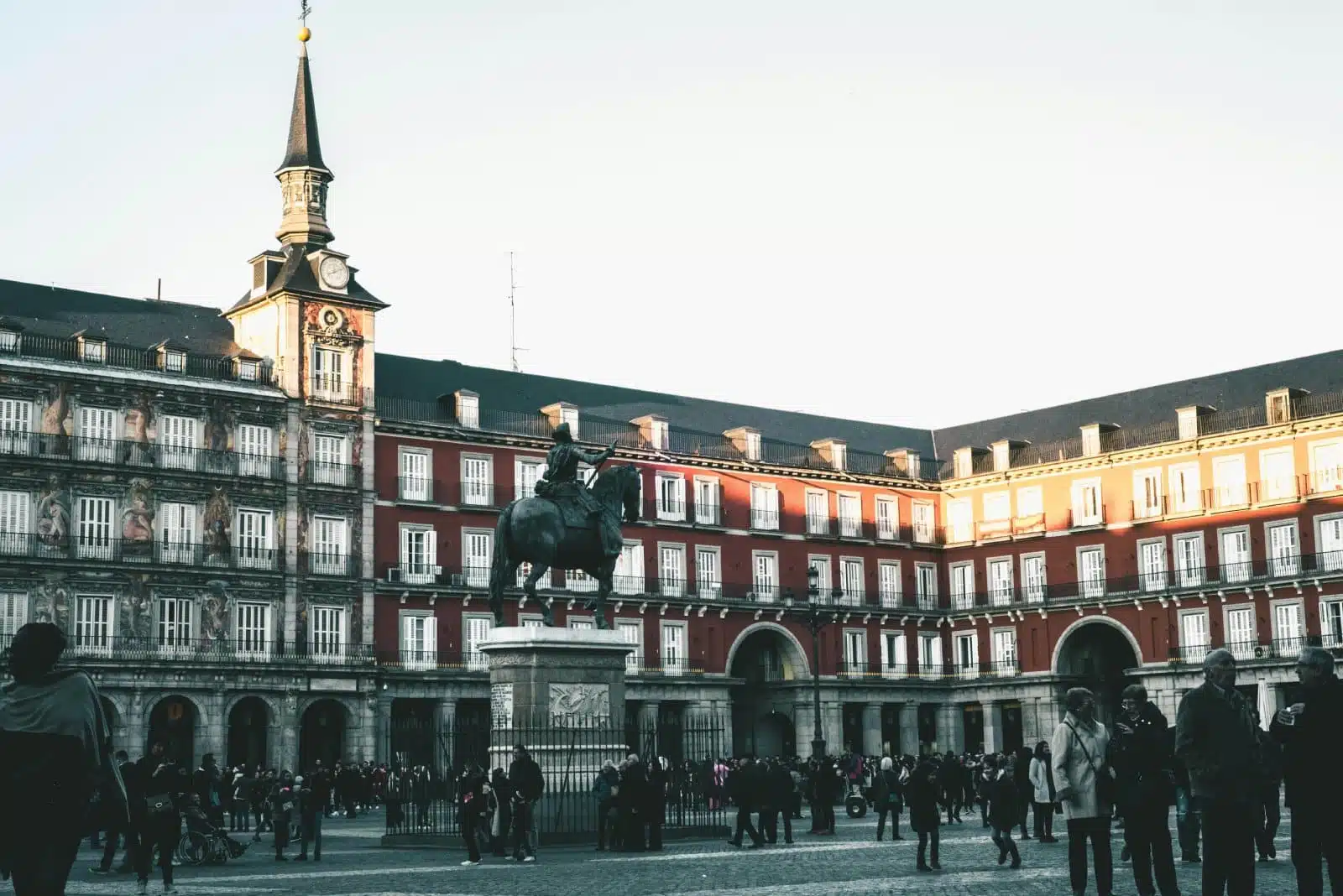
Image Credit: Pexels / Mati Angulo
In the historic heart of Madrid, Plaza Mayor is a grand square witnessing Spanish history unfolding. Surrounded by porticoed buildings, the plaza has served various roles – from market to bullring to execution site – reflecting the multifaceted nature of Spanish society. Today, Plaza Mayor is a place of leisure, where cafes and restaurants offer spaces for relaxation and social interaction. Its architectural uniformity, a result of a 1790 reconstruction, provides a harmonious backdrop for the vibrant life of the square.
Insider’s Tip: Try the traditional calamari sandwich at one of the bars around the plaza.
When to Travel: Early mornings or late afternoons offer a more relaxed atmosphere.
How to Get There: Sol metro station is a short walk away.
10. Temple of Debod
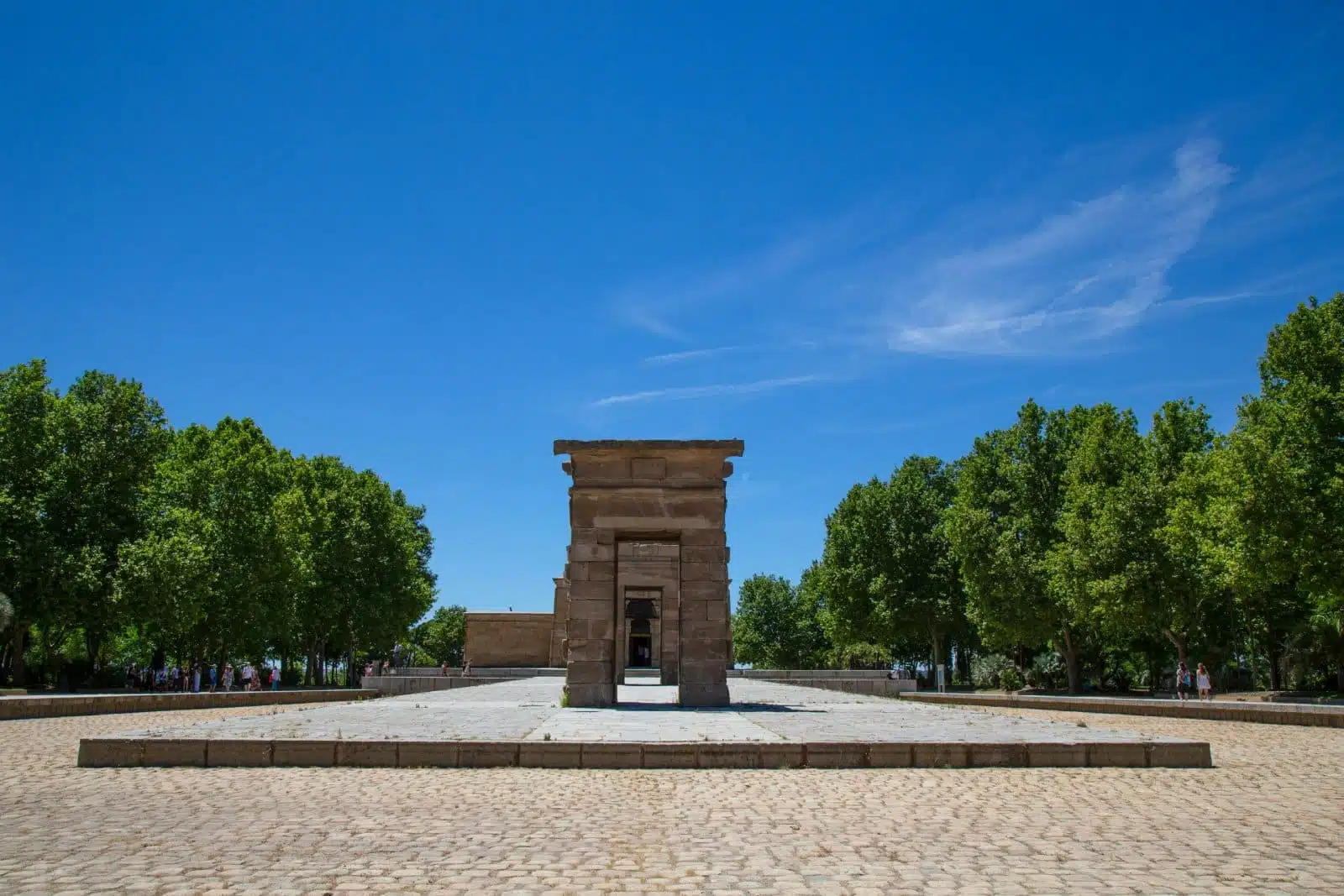
Image Credit: Pexels / Sergio Scandroglio
The Temple of Debod is an ancient Egyptian temple that stands as a symbol of international cooperation and cultural preservation. Gifted to Spain by Egypt in gratitude for assistance in saving the Nubian temples, the Temple of Debod is a piece of antiquity nestled in Madrid’s urban landscape. Its presence in the city reminds us of the universal value of cultural heritage and the shared responsibility for its protection. The temple, particularly striking at sunset, offers a moment of contemplation amid the city’s hustle and bustle.
Insider’s Tip: The temple is best visited at sunset when the setting sun aligns with the temple’s axis.
When to Travel: Late afternoon to evening for the best light for photographs.
How to Get There: Plaza de España metro station is nearby.
11. Madrid Rio
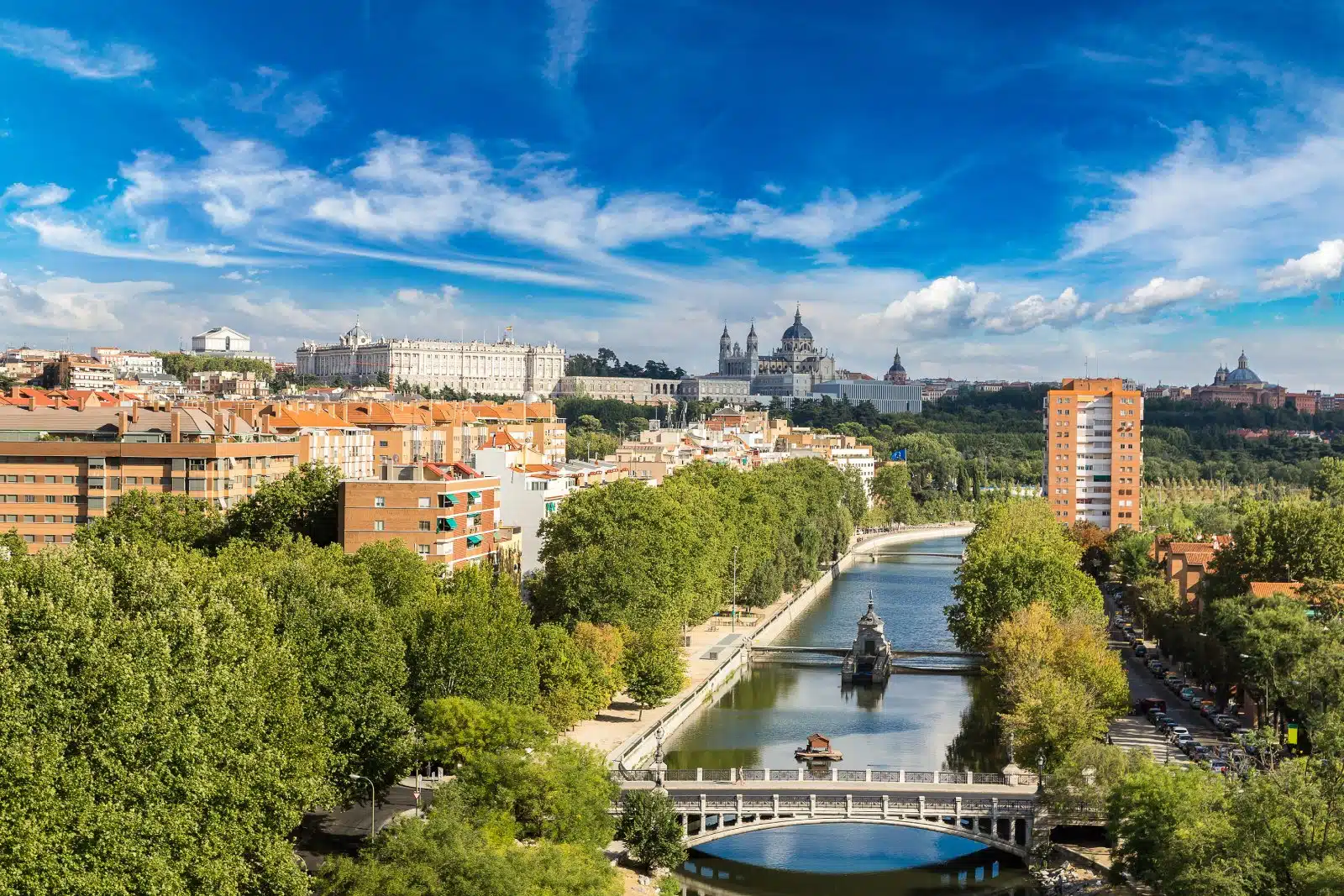
Image Credit: Shutterstock / Sergii Figurnyi
Madrid Rio highlights the city’s transformation and commitment to public spaces. This extensive park along the Manzanares River provides a green corridor for recreation and relaxation, connecting urban neighborhoods with nature. Madrid Rio’s playgrounds, sports facilities, and cultural venues foster community engagement and outdoor activity, reflecting the city’s vision for a livable and inclusive urban environment.
Insider’s Tip: Rent a bike to explore the extensive trails along the river.
When to Travel: Spring and autumn for pleasant outdoor weather.
How to Get There: Access is easy from multiple points; the Príncipe Pío station is a good starting place.
12. Matadero Madrid
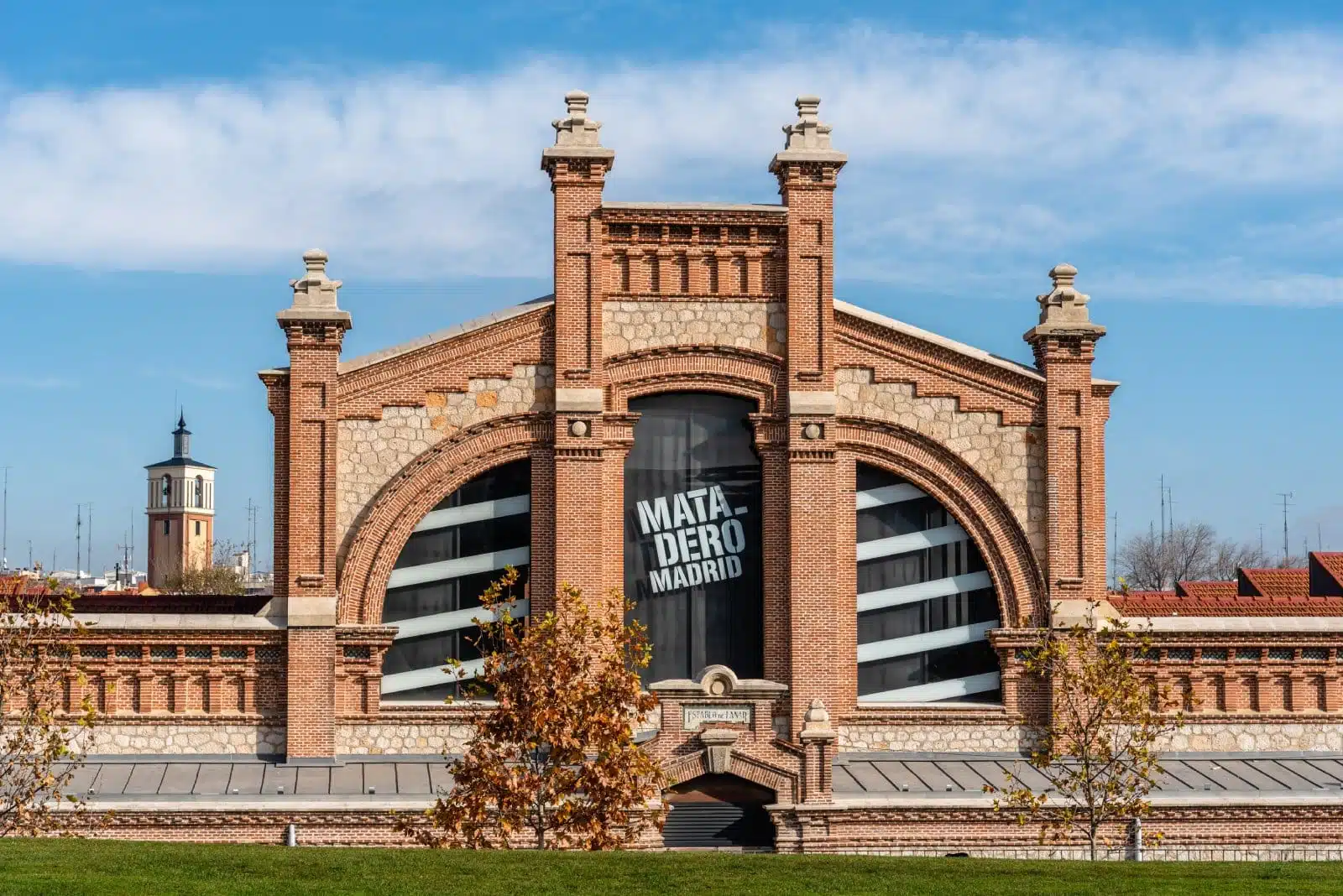
Image Credit: Shutterstock / JJFarq
This former slaughterhouse has been reimagined as a contemporary arts center, where the industrial architecture provides a unique backdrop for exhibitions, performances, and creative endeavors. Matadero Madrid is a dynamic space that encourages artistic experimentation and dialogue, underscoring the city’s role as a cultural innovator.
Insider’s Tip: Check the schedule for outdoor movie screenings in the summer.
When to Travel: Year-round, with seasonal events offering varied experiences.
How to Get There: Legazpi metro station is just a short walk away.
13. Cibeles Palace and Fountain
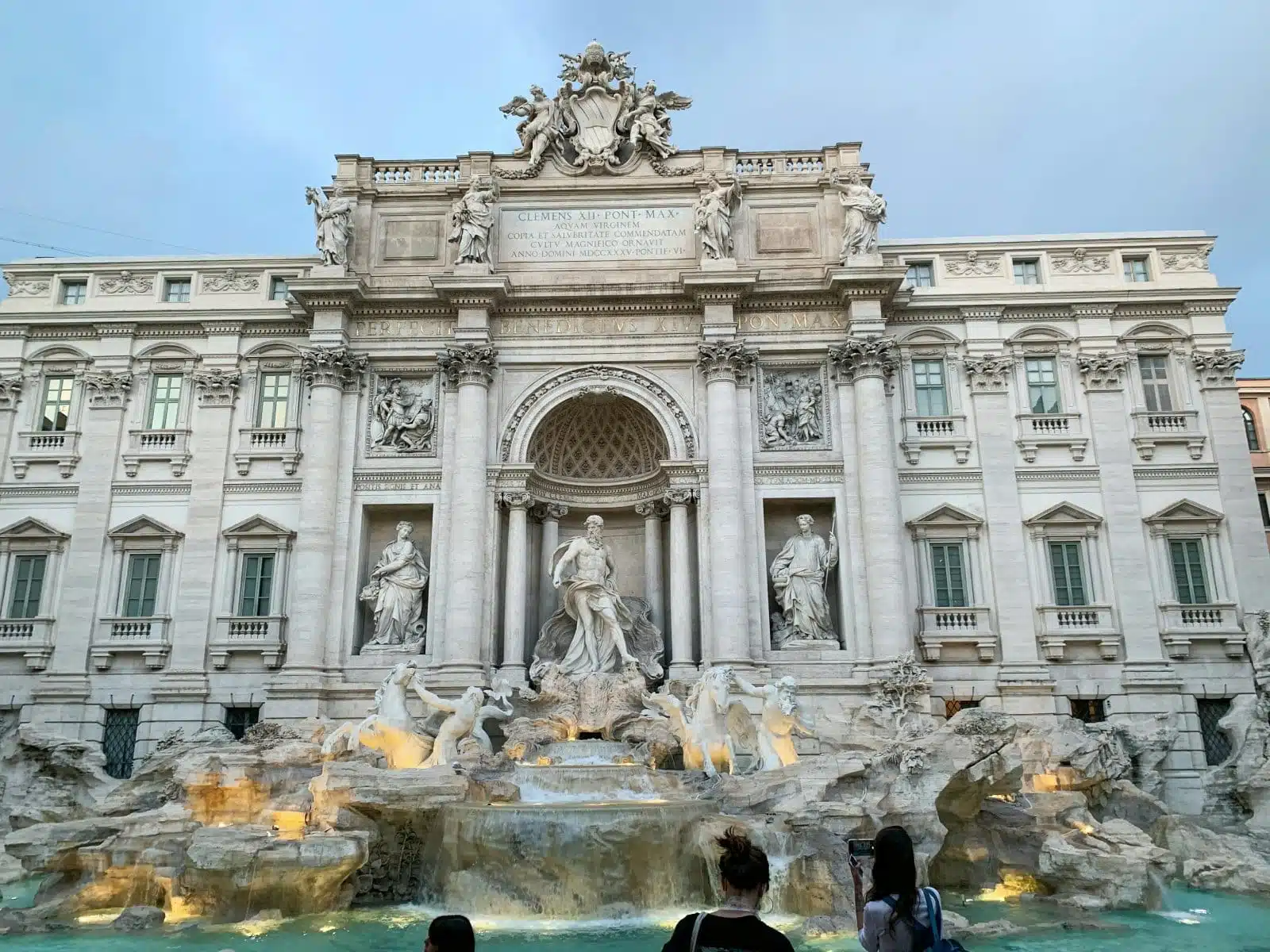
Image Credit: Pexels / Bastian Riccardi
Cibeles Palace and Fountain are iconic landmarks that embody Madrid’s architectural beauty and historical narrative. The palace, with its striking façade and ornate interiors, serves as a cultural and administrative center, while the fountain, featuring the goddess Cybele, is a beloved symbol of the city. Together, they form a majestic ensemble that captures the essence of Madrid’s grandeur and its enduring connection to its historical roots.
Insider’s Tip: Visit the palace’s observation deck for stunning views of Madrid.
When to Travel: Anytime, though evenings offer a beautifully lit view of the fountain and palace.
How to Get There: Banco de España metro station is nearby.
14. Malasaña Neighborhood
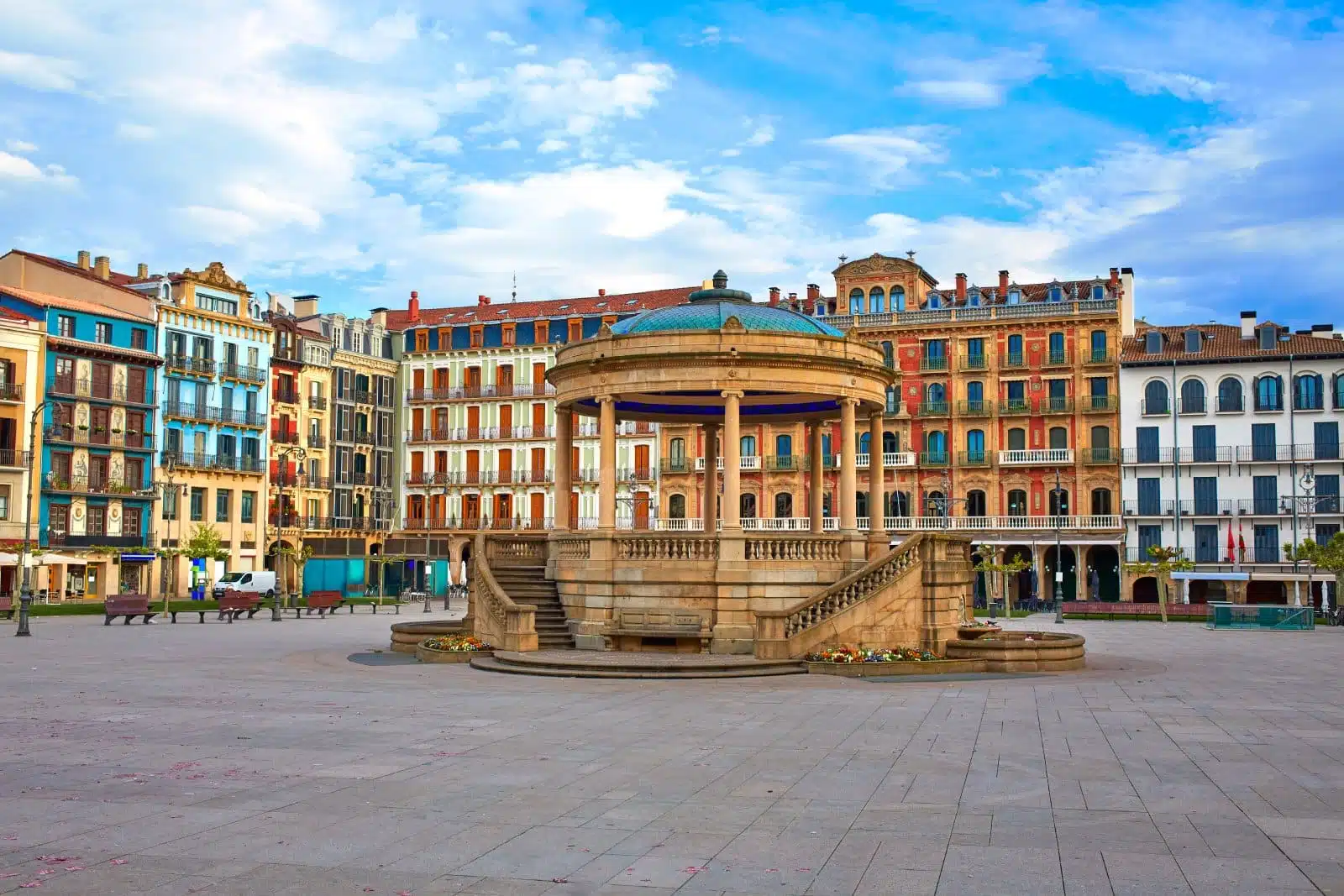
Image Credit: Shutterstock / lunamarina
Malasaña Neighborhood is the beating heart of Madrid’s alternative scene, a district where creativity and rebellion coexist. Known for its indie boutiques, art spaces, and eclectic bars, Malasaña is a canvas for self-expression and innovation. The neighborhood’s vibrant street life and cultural diversity make it a magnet for those seeking an authentic urban experience away from the mainstream.
Insider’s Tip: Explore the small art galleries and design shops for unique finds.
When to Travel: Weekend nights for the liveliest atmosphere, though daytime offers a more laid-back experience.
How to Get There: Tribunal metro station is the gateway to Malasaña.
15. La Latina

Image Credit: Shutterstock / BearFotos
La Latina encapsulates the essence of Madrid’s rich history and vibrant social life. This historic neighborhood is celebrated for its narrow streets, which meander through centuries-old buildings, leading to lively squares filled with tapas bars and restaurants. Here, the tradition of sharing small plates and engaging in lively conversations embodies the Spanish way of life. La Latina also has significant landmarks like the Basilica of San Francisco el Grande, showcasing Madrid’s architectural diversity. The area comes alive on Sundays with El Rastro market, where many vendors offer everything from antiques to modern crafts. The neighborhood’s blend of historical charm and contemporary vitality, especially during the Fiesta de La Paloma, provides a deep dive into Madrid’s communal and festive spirit.
Insider’s Tip: Visit during the La Paloma festival in August for traditional celebrations.
When to Travel: Sundays coincide with El Rastro market, adding to the area’s lively atmosphere.
How to Get There: La Latina metro station drops you in the heart of the neighborhood.
16. Casa de Campo
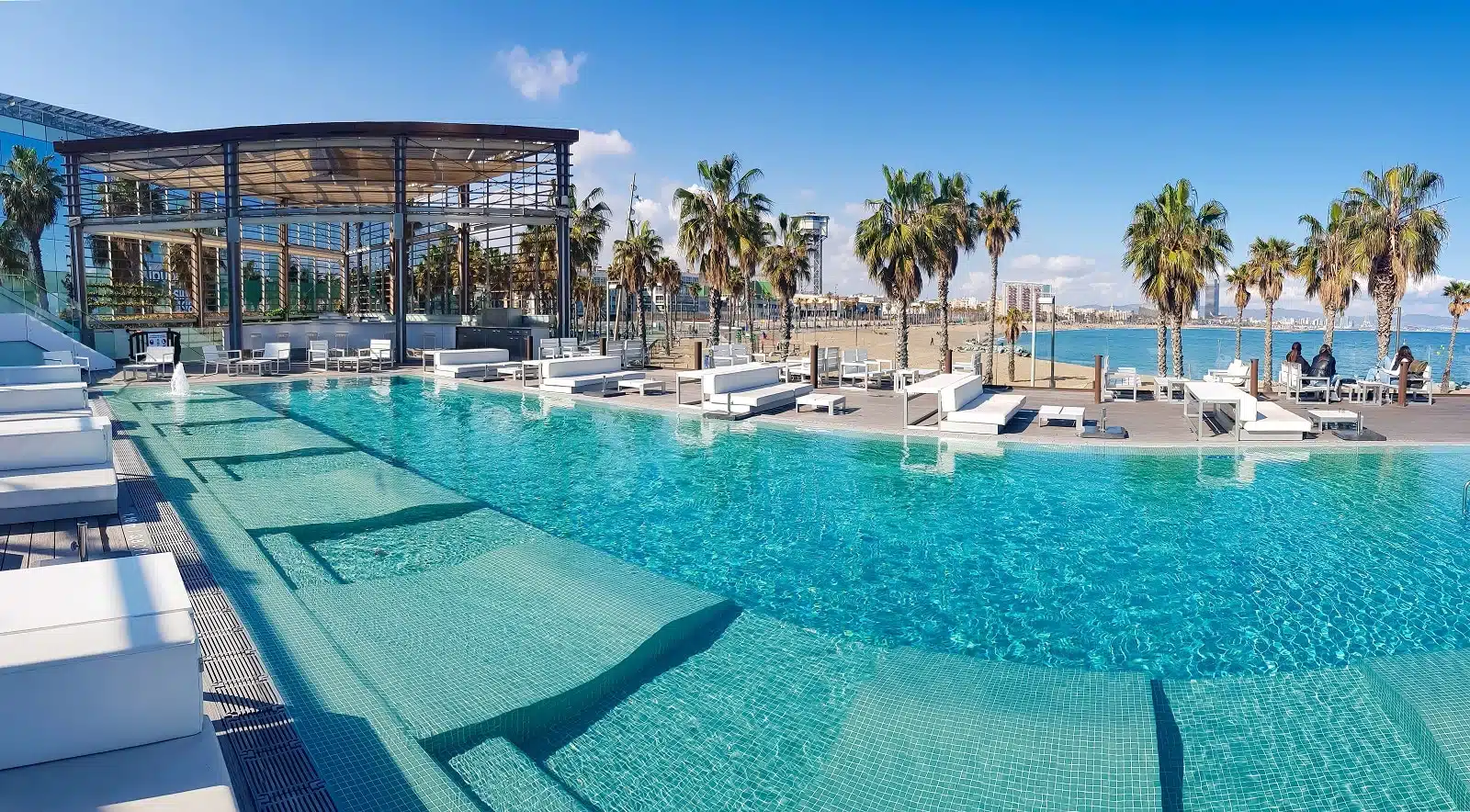
Image Credit: Shutterstock / Tanya Keisha
Casa de Campo offers a vast green retreat in the heart of Madrid. Once a royal hunting ground, this extensive park now serves as the city’s lung, offering many outdoor activities. It caters to families and nature lovers with its amusement park, zoo, and serene lake. The park’s trails invite hiking and cycling enthusiasts, while its open spaces are perfect for picnics and leisure. The cable car ride to the park offers breathtaking views of Madrid, making Casa de Campo a perfect blend of natural beauty and recreational fun. This park provides a peaceful escape from urban life and reflects Madrid’s dedication to preserving green spaces and promoting outdoor activities.
Insider’s Tip: The cable car from Paseo del Pintor Rosales offers a scenic route into the park.
When to Travel: Weekends for a full range of open amenities, though weekdays are quieter.
How to Get There: Lago metro station provides direct access to the park.
The Bottom Line
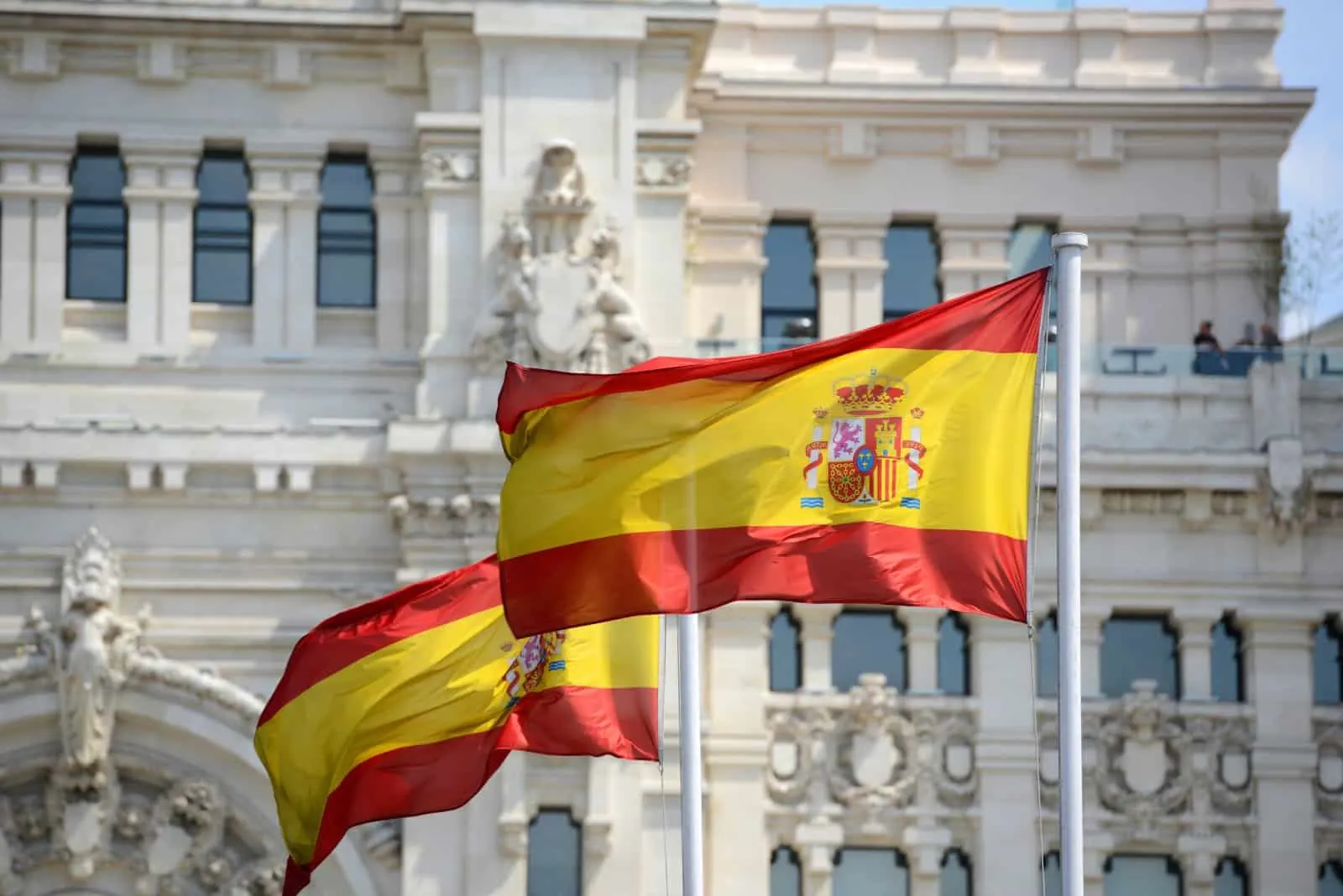
Image Credit: Shutterstock / Wangkun Jia
Madrid is a city that captivates with its rich history, vibrant culture, and dynamic culinary scene. Whether you’re enjoy the masterpieces in the Prado Museum, strolling through the expansive Retiro Park, or indulging in the culinary delights of Mercado de San Miguel, Madrid offers experiences that resonate with the soul of every traveler. As you explore this magnificent city, immerse yourself in its unique rhythm and let Madrid reveal its secrets.
More From The Green Voyage
Top 10 Trending Travel Destinations 2024
6 Essential Banking Apps for International Travel – Managing Your Finances on the Go
Traveling With Kids – 10 Tips to Create Memorable Family Holidays
The post A City Guide to Madrid, Spain first appeared on The Green Voyage.
Featured Image Credit: Shutterstock / eldar nurkovic.
For transparency, this content was partly developed with AI assistance and carefully curated by an experienced editor to be informative and ensure accuracy.
